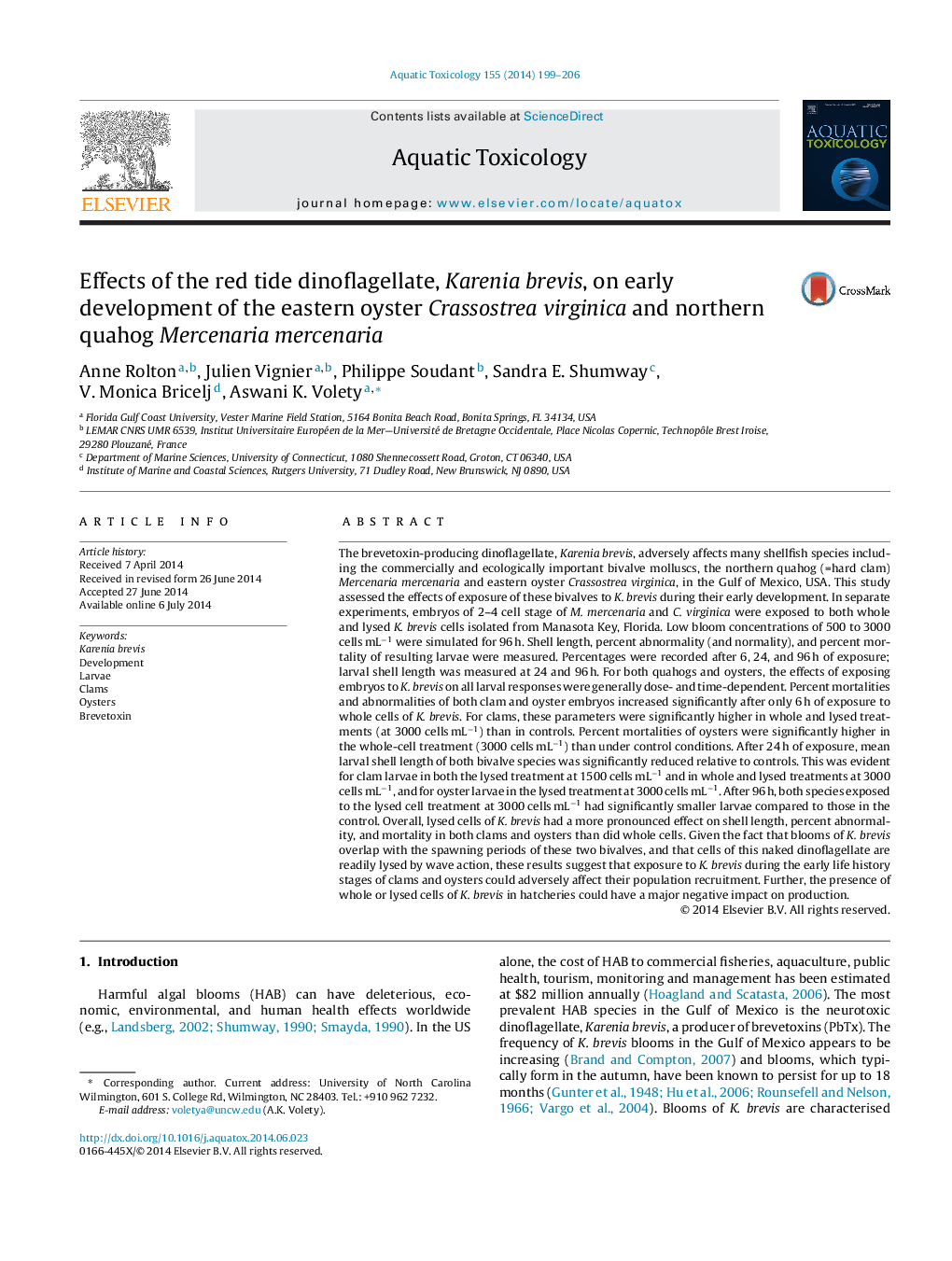| کد مقاله | کد نشریه | سال انتشار | مقاله انگلیسی | نسخه تمام متن |
|---|---|---|---|---|
| 4529173 | 1625950 | 2014 | 8 صفحه PDF | دانلود رایگان |

• Embryos of northern quahogs and eastern oysters were exposed to Karenia brevis for 96 h.
• Shell length, abnormality/normality and mortality of resulting larvae were measured.
• Sub-lethal and lethal effects were seen after 6 h of exposure.
• Overall, deleterious effects on larval development were dose- and time-dependent.
• Understanding of the mode of action of Karenia brevis on bivalve larvae is improved.
The brevetoxin-producing dinoflagellate, Karenia brevis, adversely affects many shellfish species including the commercially and ecologically important bivalve molluscs, the northern quahog (=hard clam) Mercenaria mercenaria and eastern oyster Crassostrea virginica, in the Gulf of Mexico, USA. This study assessed the effects of exposure of these bivalves to K. brevis during their early development. In separate experiments, embryos of 2–4 cell stage of M. mercenaria and C. virginica were exposed to both whole and lysed K. brevis cells isolated from Manasota Key, Florida. Low bloom concentrations of 500 to 3000 cells mL−1 were simulated for 96 h. Shell length, percent abnormality (and normality), and percent mortality of resulting larvae were measured. Percentages were recorded after 6, 24, and 96 h of exposure; larval shell length was measured at 24 and 96 h. For both quahogs and oysters, the effects of exposing embryos to K. brevis on all larval responses were generally dose- and time-dependent. Percent mortalities and abnormalities of both clam and oyster embryos increased significantly after only 6 h of exposure to whole cells of K. brevis. For clams, these parameters were significantly higher in whole and lysed treatments (at 3000 cells mL−1) than in controls. Percent mortalities of oysters were significantly higher in the whole-cell treatment (3000 cells mL−1) than under control conditions. After 24 h of exposure, mean larval shell length of both bivalve species was significantly reduced relative to controls. This was evident for clam larvae in both the lysed treatment at 1500 cells mL−1 and in whole and lysed treatments at 3000 cells mL−1, and for oyster larvae in the lysed treatment at 3000 cells mL−1. After 96 h, both species exposed to the lysed cell treatment at 3000 cells mL−1 had significantly smaller larvae compared to those in the control. Overall, lysed cells of K. brevis had a more pronounced effect on shell length, percent abnormality, and mortality in both clams and oysters than did whole cells. Given the fact that blooms of K. brevis overlap with the spawning periods of these two bivalves, and that cells of this naked dinoflagellate are readily lysed by wave action, these results suggest that exposure to K. brevis during the early life history stages of clams and oysters could adversely affect their population recruitment. Further, the presence of whole or lysed cells of K. brevis in hatcheries could have a major negative impact on production.
Journal: Aquatic Toxicology - Volume 155, October 2014, Pages 199–206